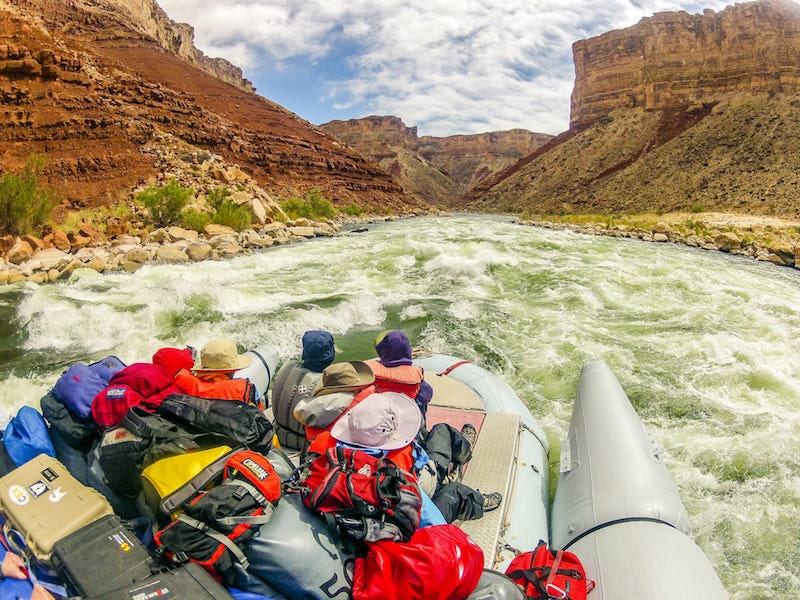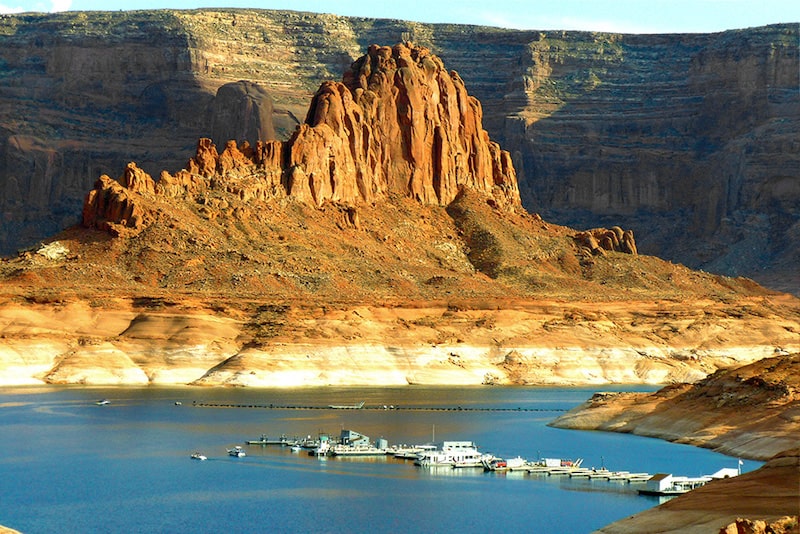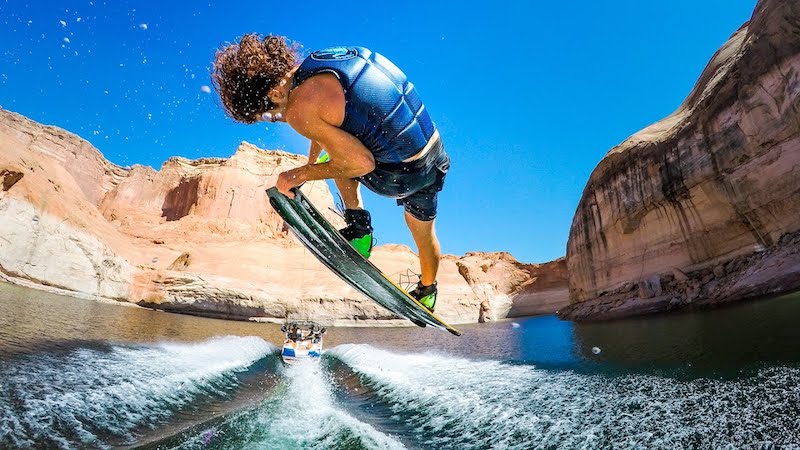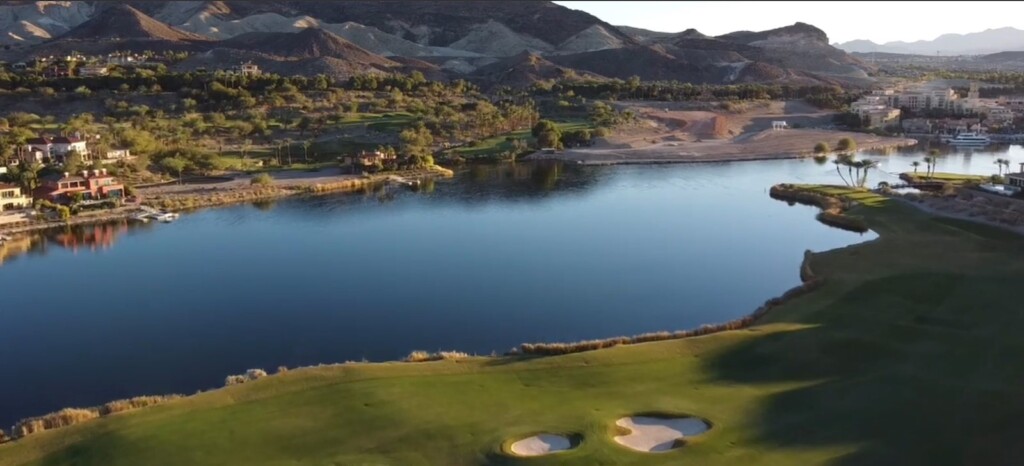
“Eventually all things merge into one, and a river runs through it.” ― Norman Maclean
Lake Powell has it all: waterskiing, slot canyons, deep waters, cliff diving and fishing.
But did you know that buried beneath the water contained by Glen Canyon Dam is an even greater treasure?
The treasure is the ecology ― a habitat for fish, birds and wild game. Not to mention caves, canyons and native relics. The former ecology was similar to what we find in the Grand Canyon and Escalante but even more spectacular: more slot canyons; waterfalls; quiet areas perfect for respite. Glen Canyon Dam and Lake Powell are amazing recreational spots, but the dam was a mistake. The lake is filling up with 100,000 cubic yards of silt every year, and the silt that should be transported to the Gulf of California is instead burying the treasure below the lake.
As a teenager who loved all water motor sports and waterskiing, I could have never imagined that there was such a thing as a person who didn’t love reservoirs made possible by dams. But since then I thought it was about time a story was written about the environmental movement.
This is coming from someone who isn’t on the environmental left or the dam-loving right. To research this story I’ve had to run rivers, speak with guides and BLM employees; I’ve witnessed spectacular scenery on rivers and read extensively on the subject. It’s taken years, but someone had to do it. So here is my dam story.
How The Environmental Movement Became Mainstream
The tide started changing in the minds of outdoors people when Robert Redford adapted the short story by Norman Maclean: A River Runs Through It into a film starring Brad Pitt. This was a pivotal moment because there are the “environmentalist wackos” who are a small minority in the lunatic fringe. They are the Monkeywrenchers who like to chant and show their displeasure for dams, progress and human overpopulation. But there are far more people who are outdoor enthusiasts who comprise the silent majority here in Utah.
A River Runs Through It was so masterfully presented that anyone who viewed the film who was an outdoor enthusiast felt a lasting impact. As good as the film is, like most adaptations, the book is even better.
In about 60 pages of his novella, 70-year-old author and retired professor, Norman Maclean, wrote a story he had told many times to his children. But in so doing, he captured the ecological life that a river possesses along with its human connection. Maclean describes the manner in which water shapes, carves, and carries life; the way in which fish reside in the fast-moving current among rocks inside of eddies and “holes.”
A skilled fly fisherman learns to read holes and identify where fish might be waiting for insects. Through the “reading” process he discovers the river’s language of current, water and motion. Maclean presents his story and his skill in fly fishing Montana’s rivers. He did this without any intent for propaganda or literary success. He refused to advertise his book.
In describing wild rivers and his connection with the river’s ecology, Maclean showed that the life of wild rivers is well worth preserving. Maclean’s sentiment was highly contagious.
The book’s prominence grew through word-of-mouth, and the year after it was released in 1976, it was nominated for a Pulitzer Prize. The book and the film were catalysts for the undercurrent of the environmental movement to move more mainstream.
The Progress That Defined the 20th Century
The growing conservation movement of the 21st century is in stark contrast with the progress-at-all-costs mindset which dominated the middle of the 20th century. The 20th Century was geared toward western expansion and the idea that nature needed to be “tamed” to coerce it into providing a better life for millions of Americans who could settle out West and be promised land and water.
The Sierra Club presented a collection of articulate writers and environmentalists, who worked with leaders of the Department of the Interior and the Bureau of Reclamation over a century of dam projects. But in the early sixties, it seems that momentum was growing to build more dams, and to build them in a grander scale to provide more power and water to the quickly-growing cities of Phoenix, Las Vegas and Los Angeles.
Martin Litton was an LA Times photojournalist and reporter who helped turn the tide away from massive dam proposals for the Grand Canyon. His articles clearly demonstrated what was lost when rivers are dammed. Litton became a staunch advocate for David Brower who was the head of the Sierra Club at that time. They began to set their sites on what a huge error Glen Canyon Dam was, and they determined that there should be “no compromise” when it comes to building dams that cause irreparable harm to ecology.
Edward Abbey’s The Monkey Wrench Gang is a fictional novel about a group of friends blowing Glen Canyon Dam to pieces, obliterating Lake Powell, and destroying the dreams of those vile bureaucrats who built the dam in the first place. But what were the roots of this previous dam-building era? How did the building spree to clog all our rivers in the name of progress all come about?
The Beginning of the Bureau of Reclamation
It was in 1900 when the Department of the Interior set its sights on taming the western deserts so that large populations could inhabit and flourish in the arid seven Great Basin states.
The West had already been “conquered” and bought from Mexico. But the time had come to defeat the harsh elements by harnessing the power and vitality of the rivers — mainly the Colorado River and its tributaries.
The method was to build “multi-purpose dams” — monumental edifices that not only captured precious drinking and irrigation water, but paid for themselves over time by generating cash through producing hydro-electric energy and recreation opportunities (fishing and boating).
The Bureau of Reclamation was born in 1902 under Theodore Roosevelt’s vision, and passage of the “Reclamation Act” with the stated goal to improve water storage and transmission in the states where water scarcity was the limiting growth factor. The Act required that states repay the initial construction costs from their received benefits.
The agency accomplished what private enterprise was unable to organize or finance: the critical infrastructure of large irrigation ditches and small dam projects. It wasn’t until 1928 Congress approved and appropriated funding for the most massive project on the Colorado River which promised to deliver more water and more electricity than any prior project: The Hoover Dam. It would put the federal government into the electricity generation business.
The completion of the Hoover Dam is a true feat of human ingenuity and an engineering marvel: a massive edifice rising as tall as a skyscraper. It is a plumbing system to service millions of thirsty communities — with the capability to eventually recoup all construction costs by servicing millions of customers with a constant source of electricity.
The Hoover Dam’s Art Deco appearance is unlike anything in the world: white concrete against black rock: even the most sensitive environmentalist would find it difficult to not marvel at both its sheer magnificence and the feeling that emanates from its core — a behemoth harnessed and tamed within its millions of yards of concrete and steel rebar with massive turbines humming as millions of gallons of water pass through each second. Overhead in neighboring Henderson, the massive power lines loudly buzz with electricity from the dam’s productivity.
When the Hoover Dam was completed, the Department of the Interior and Bureau of Reclamation operated under Franklin D. Roosevelt. At this time the nation as a whole had a dominant mindset: that western expansion would succeed in populating the entire landmass of the contiguous United States. It seems everyone knew full-well that what was essentially being accomplished was the taming of a wild beast. A quote from the bureau chief:

“Unharnessed it tore through deserts, flooded fields, and ravaged villages. It drained the water from the mountains and plains, rushed it through sun-baked thirsty lands and dumped it into the Pacific Ocean — a treasure lost forever.”
The propaganda work continued in their articulated vision:
Tomorrow the Colorado River will be utilized to the very last drop. Its water will convert thousands of additional acres of sagebrush desert to flourishing farms and beautiful homes for servicemen, industrial workers, and native farmers who seek to build permanently in the West. Its terrifying energy will be harnessed completely to do an even bigger job in building bulwarks for peace. Here is a job so great in its possibilities that only a nation of free people have the vision to know that it can be done and that it must be done. The Colorado River is their heritage.
The Legacy of the Bureau of Reclamation
The Bureau built 134 dams and canals to fulfill the vision of Manifest Destiny. The bureau proclaimed that all Americans had an inheritance of “empire builders.”
In this gushing effusiveness Arizona supported and most of the nation agreed upon the construction of a second dam on Glen Canyon. Phoenix would indeed greatly benefit thanks to the building of Glen Canyon. And of course, Las Vegas would never exist if it weren’t for the Hoover Dam.
But today, a growing number of people are calling for the demolition of Glen Canyon Dam and returning the Colorado River to its natural state.
They knew in the taming process and making the desert blossom, indeed they were losing a treasure. By the mid-1960s the mighty Colorado River was no longer flowing regularly into the Colorado River Delta and the Gulf of California in Mexico. Rather it had become a series of plumbing works that, in the lower basin states especially, removed all means by which the water could escape. The Central Arizona Project was a multi-billion-dollar effort to provide the growing municipality of Phoenix, Flagstaff, and Tucson enough power and water to accommodate populations in the millions. Well-connected political leaders from Arizona such as Wayne Aspinall paved the way to ensure Arizona would become a wealthy state due to the water rights he preserved from the Colorado River for Arizona.
But it didn’t take long for politicians to realize that overcommitments to each lower basin state had been made. They had overestimated the amount of water the Colorado could produce and failed to account for drought periods. So for the past sixty years, there have been highly expensive legal battles among states suing each other over water rights. Arizona won a huge battle when California attempted to sue them in the early 1960s. It took four years and thousands of pages of briefs to lead to a final victory for the Copper State to keep their 1.5 million acre-feet of water preserved even under drought conditions.
Those battles continue today. But the sentiment of “Reclaiming the West” has subsided. The more dominant sentiment is now embodied in the modern environmental movement, which is attempting to restore the estuaries, alluvial basins, deltas and habitats for native fish and ecology. This can all happen, according to the most powerful environmental groups through “Conservation” and the elimination of dams.
Outdoor Retailer Patagonia Supports Damnation
The environmental movement is gaining momentum from funding from outdoor recreation and outdoor clothing companies such as Patagonia, which was the major sponsor for a recent documentary film “DamNation.” They are reshaping the dominant philosophy of what our rivers provide for us in this era. Ken Sanders Rare Books in Salt Lake City, and Back of Beyond in Moab keep the voices of conservation alive in the pages of the books they sell. Terry Tempest Williams, Craig Childs, along with dozens of other authors articulate how river ecology, wilderness preservation and conservation are essential in maintaining the sanity of human progress.
The New “Reclamation” of the West
Under a conservation mindset the status quo of “reclamation” is tipped on its head. The forces of nature: floods, alluvial basins, ecology and natural habitats are not “reclaimed” by building dams. The adjective only holds up if it is assumed that humans are the pinnacle of all existence. If ecology and natural habitats are as important as humans, then the environmental movement today is the new “bureau of reclamation.”
But this reclamation effort is designed to restore destroyed ecosystems (from dams) for fish and wildlife. But even more needs to be reclaimed: our sanity, our communities, our local awareness. Today the Jordan River is being restored through the efforts of the Jordan River Commission under Soren Simonson. Beavers are being reintroduced to restore wetland habitats. Rotational electric-fence grazing of large herbivores is restoring pastoral regions, restoring aquifers and springs.
It’s becoming increasingly clear that as we pour more concrete over good land, bury in pipelines, build over the top of more farms, we are slowly losing our umbilical cord with the rest of creation that keeps us sane; keeps us connected, and maintains our understanding that we are all one human family.
Subscribe to Utah Stories weekly newsletter and get our stories directly to your inbox









